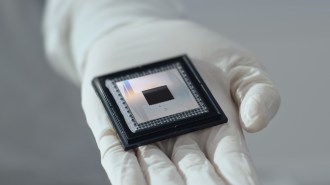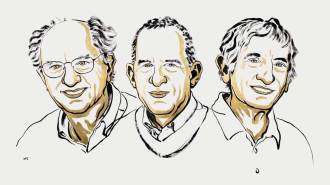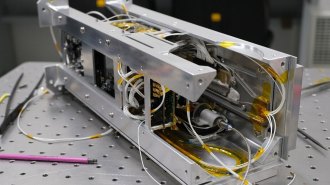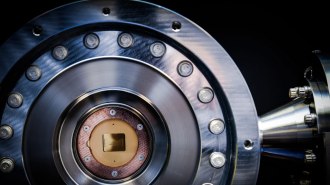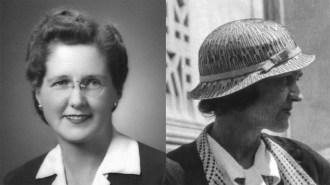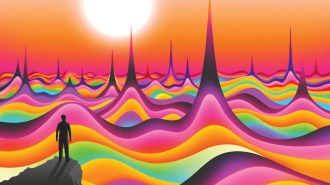‘Arrow of time’ reversed in quantum experiment
But the second law of thermodynamics still holds true

TURN BACK TIME In a quantum experiment, scientists reversed the arrow of time, the idea that natural processes run in one direction in time.
rawpixel.com/Shutterstock
- More than 2 years ago
Your lukewarm cup of coffee won’t suddenly heat itself up, no matter how long you put off the trek to the microwave. But the same rule doesn’t necessarily apply to quantum systems. Like chilly air warming a mug, heat can spontaneously flow from a cold quantum particle to a hotter one under certain conditions, researchers report November 10 at arXiv.org. This phenomenon seems to reverse the “arrow of time,” the idea that natural processes run forward but not in reverse (SN: 7/25/15, p. 15).
The existence of an arrow follows from the second law of thermodynamics. The law states that entropy, or disorder, tends to increase over time. That rule explains why it’s easy to shatter a glass but hard to put it back together, and why heat spontaneously flows from hot to cold but not the opposite direction.
The new result, however, “shows that the arrow of time is not an absolute concept, but a relative concept,” says study coauthor Eric Lutz, a theoretical physicist at the University of Erlangen-Nürnberg in Germany. Different systems can have arrows of time that point in different directions, Lutz says. While the arrow was apparently reversed for the two quantum particles the researchers studied, for example, the arrow pointed in its typical direction in the rest of the laboratory.
Reversing the arrow of time was possible for the quantum particles because they were correlated — their properties were linked in a way that isn’t possible for larger objects, a relationship akin to quantum entanglement but not as strong. This correlation means that the particles share some information. In thermodynamics, information has physical significance (SN: 5/28/16, p. 10). “There’s order in the form of correlations,” says physicist David Jennings of the University of Oxford, who was not involved with the research. “This order is like fuel” that can be consumed to drive heat to flow in reverse.
Led by physicist Roberto Serra of the Federal University of ABC in Santo André, Brazil, the experimenters manipulated molecules of chloroform, which are made of carbon, hydrogen and chlorine atoms. The scientists prepared the molecules so that the temperature — judged by the probability of an atom’s nucleus being found in a higher energy state — was greater for the hydrogen nucleus than for the carbon. When the two nuclei’s energy states were uncorrelated, the heat flowed as normal, from hot hydrogen to cold carbon. But when the two nuclei had strong enough quantum correlations, heat flowed backward, making the hot nucleus hotter and the cold nucleus colder.
“It’s not that it’s contradicting any laws of physics,” says Vlatko Vedral, a physicist at the University of Oxford not involved with the study. The standard second law of thermodynamics assumes that there are no such correlations. When the second law is generalized to take correlations into account, the law holds firm. As the heat flows, the correlations between the two nuclei dissipate, a process that compensates for the entropy decrease due to the reverse heat flow.
“It’s a very nice experiment,” says physicist Gerardo Adesso of the University of Nottingham in England. But, he says, theoretical physicists had already predicted that such an effect could occur, so “it’s not entirely surprising.”
Scientists hope to use the weird thermodynamics of quantum particles to create quantum engines that could perform tasks beyond the reach of typical machines (SN: 3/19/16, p. 18), such as controlling the direction of heat flow on small scales, Serra says.

